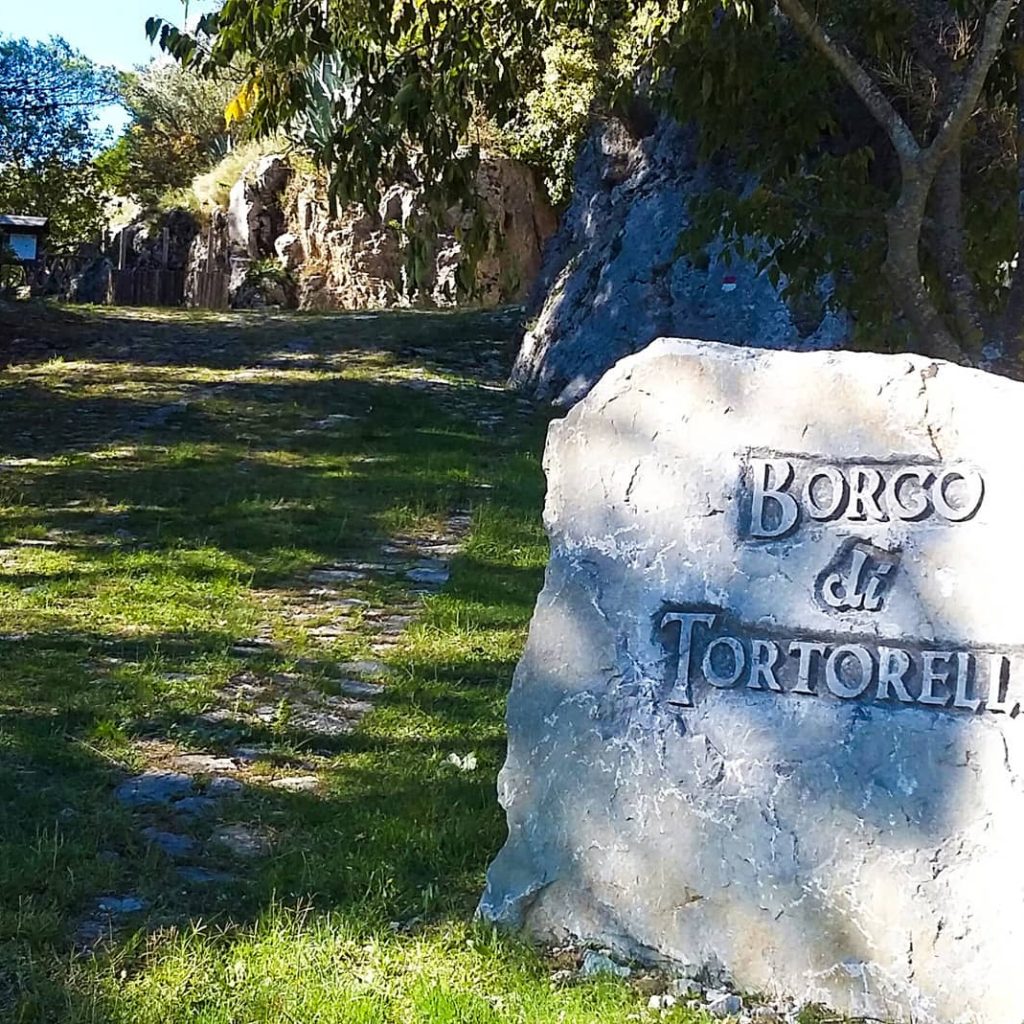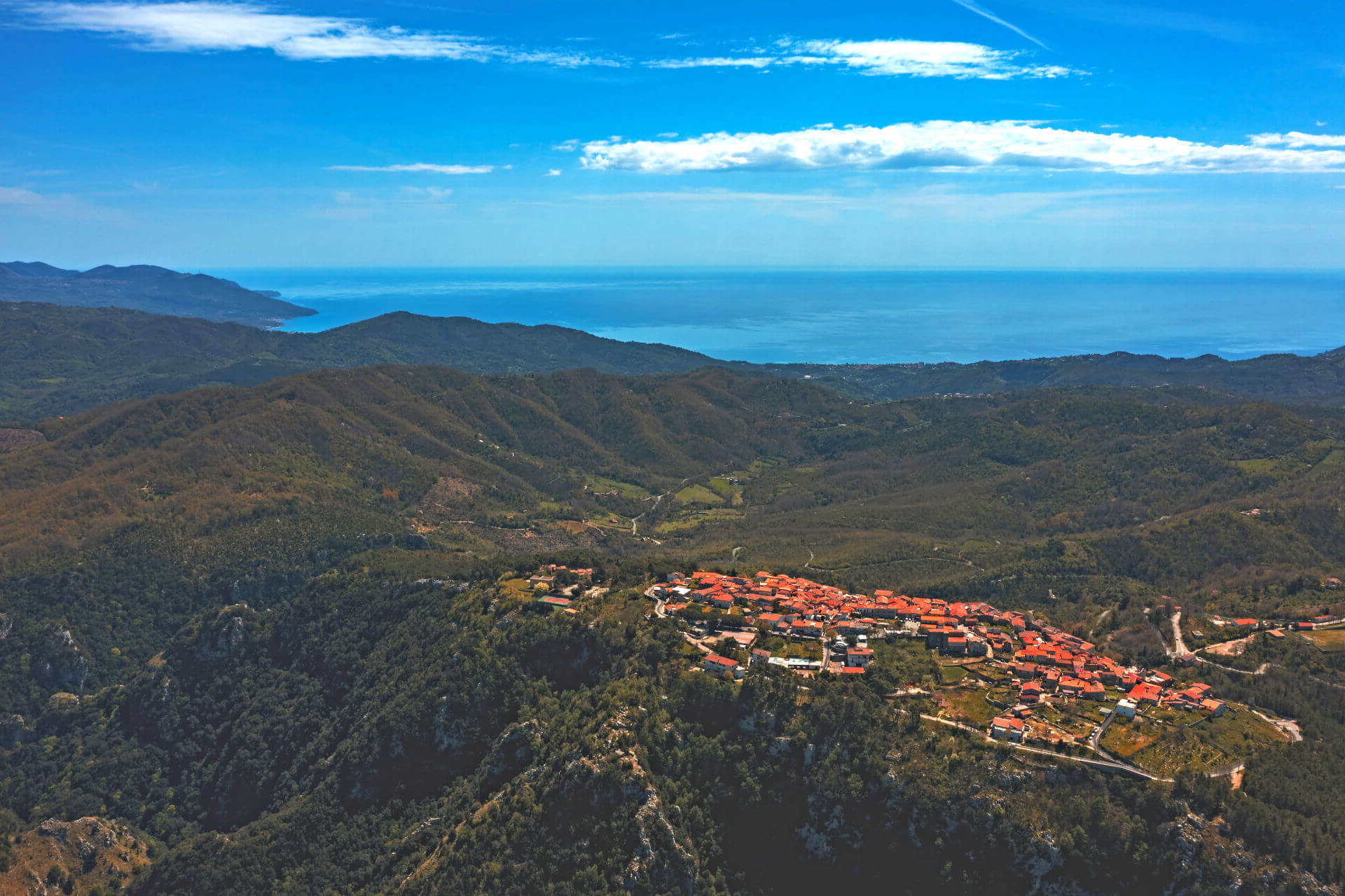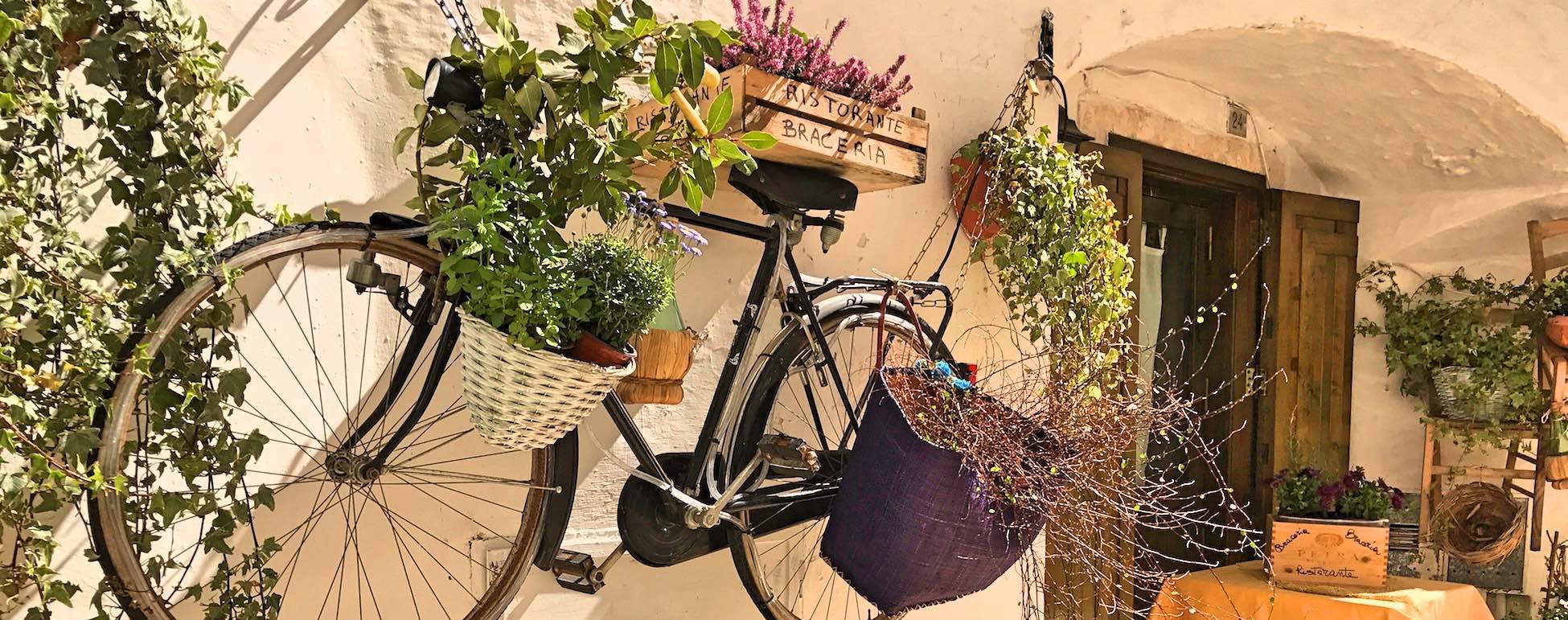The picturesque village of Tortorella dominates the surrounding valleys and gorges from its 600 metre height. The name of the town has a very specific origin: in these places, in fact, you can see splendid specimens of turtle-doves (in italian: tortora) flying in the uncontaminated greenery, among incredible views of the sea.
The town originated around the year 1000, when some inhabitants of the Byzantine provinces also arrived following the invasions and raids of the Saracen pirates. The inhabitants preferred to gather around the perimeter of the village, where much of the space was reserved for vegetable gardens and vineyards. Precious architectural evidence typical of the early Middle Ages remains from that time. Among these is the Mother Church dating back to the 11th century. and glimpses of the surrounding walls into which the south-eastern gate opens. The walls were built around the 11th century by the Normans and subsequently strengthened by the Angevins during the War of the Vespers against the Aragonese.
In the 15th century Tortorella became one of the many possessions of the Sanseverino Counts and acquired considerable importance. Until the 18th century the village was the seat of a refined society, as documented by the buildings of the time, including the Baronial Marchesale palace of the Carafa counts, now in ruins, and the numerous churches present in the area.
At the beginning of the 19th century, with the Napoleonic epic, the feudal regime was abolished and in 1810 the tyrannical family of the Marquis Carafa, who had administered Tortorella since 1600, abandoned the town, thus ending a long period characterised by abuses and violence
If these places fascinate you, you can visit Tortorella with one of our tours:
⇒Trekking in Cilento: Cammino di San Nilo
What to see in Tortorella
We have prepared a list of things to see in Tortorella to admire the beauties of this village in the hinterland of the Gulf of Palinuro.
Why not decide to spend a carefree day to discover the beauties of this fascinating mediaeval village in Cilento?
- Church of Santa Maria Assunta
- Chapel of Santa Maria dei Martiri
- Marchesale Palace
And now let's set off together to discover the most symbolic places of Tortorella!

Church of Santa Maria Assunta
The parish church of Santa Maria Assunta is located in the highest and most central place in the town. Its construction dates back to the 11th century and due to its centrality it was chosen as the Mother Church. In 1890, restoration work was carried out thanks to the help of the clergy and the entire population. It is equipped with a valuable sixteenth-century portal. The interior of the Church, with the classic plan with three naves and apse, recalls delicate baroque motifs.
Chapel of Santa Maria dei Martiri
The church is located a few steps from the town. In the past it not only had a religious function, but above all that of assisting travellers. The parishioners offered hot meals and cured the ailments that long journeys entailed. The structure, very avant-garde, had a certain autonomy, as it had a water mill. The chapel, recently restored, integrates into the surrounding rural environment. Inside it preserves remains of paintings on the walls that have not been redone, while in the central part you can admire a throne with the statue of the Virgin.
Marchesale palace
The characteristic Palazzo Marchesale, built in the 16th century, testifies to the long dominion of the Carafa family over Tortorella. With all its grandeur and charm it dominates the historic centre. The residence, with Cilento region architecture, preserves a suggestive internal courtyard paved in stone. The Portale, a press made of olive wood, is of fine workmanship. Inside there is a beautiful stone well made by an unknown.
What to do in Tortorella - the Slow Active Tours proposal
Once you have discovered the wonders hidden among the narrow streets of Tortorella, the time has come to get to the heart of the sounds and smells of this ancient village.
-
Old Town
The historic centre of Tortorella is a real jewel. The narrow, winding streets are lined with stone houses, which overlook small squares and picturesque alleys. It is a place of peace that takes you back in time. Walking through the alleys you will be enchanted by the beautiful stone portals complete with friezes and coats of arms that tell their centuries-old history, you are not overwhelmed by the frenetic pace of modern life, the community lives with a sense of balance and tranquillity which derives from the solid bond with traditions.
-
The incredible view of Little Canyon
The village is an ideal place for nature lovers. In fact, near the town centre, there is a truly unique place, which offers an incredible breathtaking view overlooking the Little Canyon, the gorge of the Busentino river.
It is a geosite of international interest and importance, characterised by a series of unique geological formations. The Belvedere is an invitation to relax following the silent rhythm of nature, accompanied by a horizon that is lost between the shades of green and the infinity of the sky. -
The ancient art of Torraca
Tortorella is a village where art is intertwined with the beauty of these enchanting views. Among the inhabitants there are those who still work iron, those who dedicate themselves to stone and those who transform broom into fabric. Like Maria Mariella, a young woman who wanted to follow a family tradition. In fact, through the use of the hand loom, she creates numerous and original objects, including shoes, bags, wedding favours and towels, which arrive all over the world from her "Salaura" workshop.
-
Naturalistic Area The Enchanted Forest of Monte Cocuzzo
At the foot of Mount Cucuzzo there is a circular nature trail that crosses the fresh and fragrant beech forest and passes the Colla pass, an ancient witness of the trade routes between the Tyrrhenian Sea and the Ionian Sea. From here you can enjoy an exclusive perspective on the mountains of Lower Cilento and Basilicata.
-
Cammino di San Nilo
Guardian of ancient crafts still alive and thriving, this small mediaeval village overlooks the route of the Camino di San Nilo offering an alternative route to those who want to regenerate themselves in front of the infinite beauty of the views skilfully painted by nature. Discover our travel proposal.
Popular festivals and celebrations on Tortorella
Various moments dedicated to folklore are well rooted in this idyllic village. Undoubtedly the most eventful time of year is summer.
One of the most awaited events by residents is the San Basilio Fair which takes place on the first of August. It once took place over the course of a week, but years later it remains a moment of socialisation, sale of local products and local craft objects.
The Ciuparedda Festival, on 14 August, is a gastronomic event that has been renewed for many years. The opportunity to taste typical local dishes, such as ciuppareda.
The Ecological Day, in mid-August, is organised every year to raise awareness and educate the new generations about respect for the environment and to spend hours together
Typical Tortorella dishes
Tortorella's cuisine is characterised by authentic and decisive flavours. The typical dishes are characterised by the excellent quality of the products, enhanced with recipes that have now become classics of Cilento gastronomy.
Among these are the omelettes with local herbs and the frascatula, i.e. polenta and cabbage seasoned with oil and crunchy peppers, as per Lucanian tradition.
Ciuparedda, on the other hand, is an exciting and genuine mix of vegetables to which a local festival is dedicated every year.
And then still other traditional dishes that enhance the taste of poor but genuine products, such as fish-style anchovies.
Poached octopus is a dish whose flavour is finely enhanced by cooking in an earthenware pan.
Eating and Drinking in Tortorella
Here are some local proposals:
A' Putega Pizzeria in San Michele Civita street ,61 Delicatessen and typical products Delicious pizzas, with the choice of traditional ingredients enhanced by cooking in a wood oven. Helpful and friendly staff. Dogs are allowed.
Caffè del Borgo in Scipione Rovito square. In the heart of the village. Nearby there is also a grocery store and a tobacconist. There is a gazebo and some beautiful benches from which to enjoy a splendid view.
So what are you waiting for? Get your stuff and off you go!





